North Dakota may not be high on your list when thinking of national parks but that’s both a blessing and a curse. North Dakota has four incredible national park service sites and one capital letter congressionally designated National Park. The beauty of few people considering North Dakota to be a great state for national parks means that you can enjoy the parks with a lot of few visitors.
Theodore Roosevelt National Park receives around 600,000 visitors per year. This is low compared to Yellowstone and Yosemite National Parks, where the annual visitor numbers total more than 3 million. Just think of all the natural beauty of a national park but without the hordes of tourists! Sounds great, right? So, if you are heading to this midwestern U.S. state, check out these North Dakota national park service sites.
Contents
National Parks In North Dakota
National Park
1- Theodore Roosevelt National Park
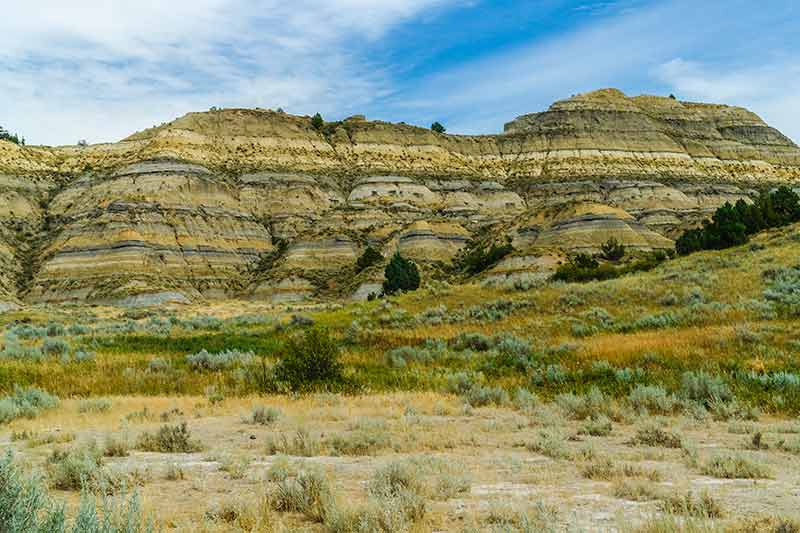
This is North Dakota’s only big name, capital letter, congressionally designated National Park.
The Theodore Roosevelt National Park is in western North Dakota in Medora, where the Badlands meet the Great Plains.
This national park actually comprises three separate geographical areas, and it is unique in the fact it’s one of the only national parks named after one single person.
The park covers 70,446 acres (28,508 ha) and incorporates an array of fascinating geographic landscapes, including stunning Badlands, meandering rivers, incredible canyons, and so many incredible animals and birds to spot.
Entrance Fee: A fee of $30 per vehicle is charged to enter the park. If you plan on visiting a few U.S. national parks, the ‘America the Beautiful Pass’ gets you access to national parks, forests and monuments, around 2,000 sites for free after the initial $79.
This national park was formerly a swampy wetland defined by its many fish and reptile species around 65 million years ago.
Ash from regular volcanic eruptions filled the swamps, and layers of different coloured rocks created this wonderful layered coloured sediment that you can see today.
Many Native American people inhabited the Badlands over the years.
The Hidatsa and Mandan tribes lived and hunted on the land on which the Theodore Roosevelt National Park now sits.
They used the park as an eagle and bison hunting ground.
The Lakota tribe who also inhabited the area called the area “mako sica”, which translated as “badlands”, hence the name.
This really is the best national park in North Dakota, so if you only have time to visit one, make sure it’s Theodore Roosevelt National Park.
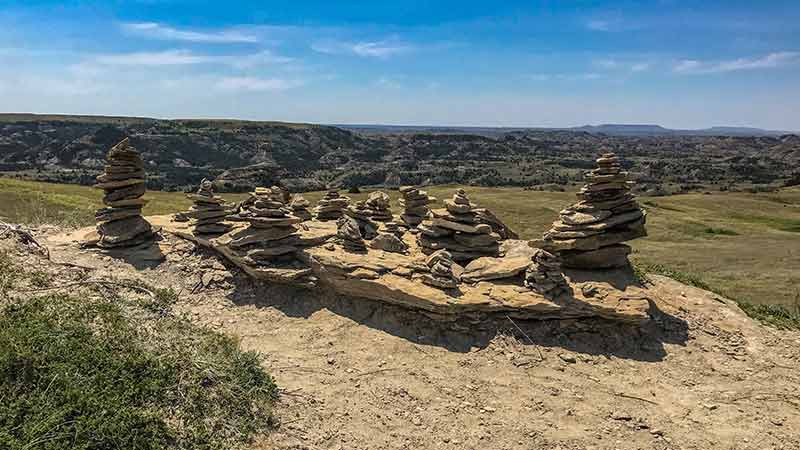
The park is named after the 26th U.S. President Theodore Roosevelt, who was well-known for his conservation efforts.
Roosevelt was first attracted to the area as an investor in a ranch along the Little Missouri River. After some years, he became heavily involved in the North Dakota ranching business.
After Roosevelt died in 1919, Medora was selected as the location for his memorial to honour his time in the state.
However, many cattle ranchers at the time protested because the 1.2 million acre proposal was on highly valuable land. But during the 1930s, the land dried up and became unprofitable, it also happened to be the Great Depression, so ranchers were forced to sell their land to the government.
In 1946 the US Fish & Wildlife and Theodore Roosevelt National Wildlife Refuge was created.
It wasn’t until 1978 that President Jimmy Carter officially declared the area the Theodore Roosevelt National Park.
There are many things to see at the park, and nature lovers will adore the sites and wildlife on display. Here are some of the things that cannot be missed.
You must visit the park to see America’s national animal, the Bison.
Many only associate the bald eagle as the USA national animal however, the bison takes pride in its position as the U.S.’s national mammal.
These oddly shaped animals are strangely majestic. You can see them in both the north and south units of the park.
Around the interstate bridge, there are usually large herds of bison. In the park’s northern unit, you can spot them the moment you enter.
Another must-see park highlight is visiting the Oxbow Overlook for stunning views of the Little Missouri River Valley.
This is a popular sunrise spot if you fancy getting up early.
Or how about heading to the River Bend Overlook? This is the perfect sunset spot and is located in the North Unit.
The panoramic views of the Little Missouri River and surrounding Badlands are stunning.
The park’s North Unit is on U.S. Highway 85, around 14 miles south of Watford City at 208 Scenic Drive, Watford City, ND 58854.
The park’s South Unit is at 315 2nd Avenue, Medora, ND 58645.
Also read:
National Historic Site
2- Fort Union Trading Post National Historic Site
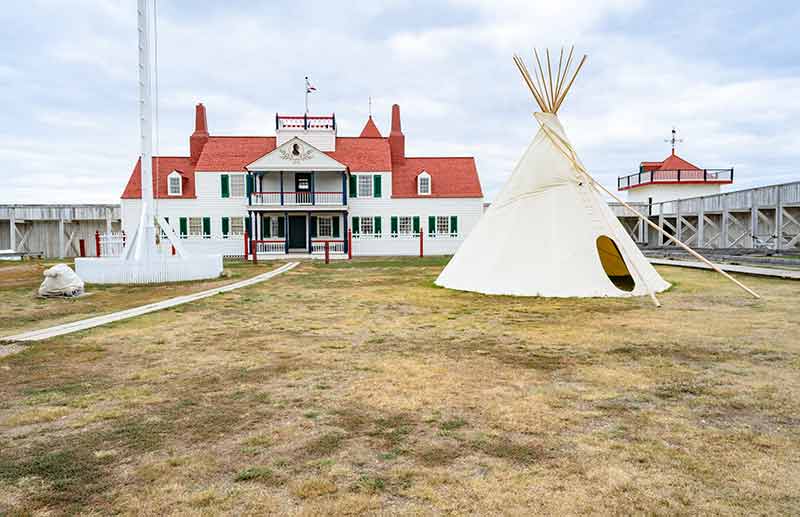
Fort Union Trading Post National Historic Site is a historical reconstruction of America’s most important fur trading post.
This national historic site is located in Williston along the Missouri River, right next to the border with Montana.
Between 1828 and 1867, Fort Union was the most important fur trading post in the States.
Start your visit to this national historic site by watching a film at the Bourgeois House Visitor Center Museum.
This trading post played a key role in the relationships between Native Americans and other cultures.
It was an area of economic and social exchange between the Northern Plains Tribes and European colonists.
These two groups used to trade weaponry, clothing, furs, buffalo hides, jewellery and more.
When you visit the trade house at Fort Union, you’ll be greeted by a costumed park ranger.
They do make you feel like you’ve travelled back in time, and their friendly and enthusiastic presentation of history is fascinating.
Once you’ve explored the trading post, you can head to the bookstore and shop to pick up some information and souvenirs from this national historic site.
Fort Union Trading Post National Historic Site is at 15550 ND-1804, Williston, ND 58801.
3- Knife River Indian Villages National Historic Site
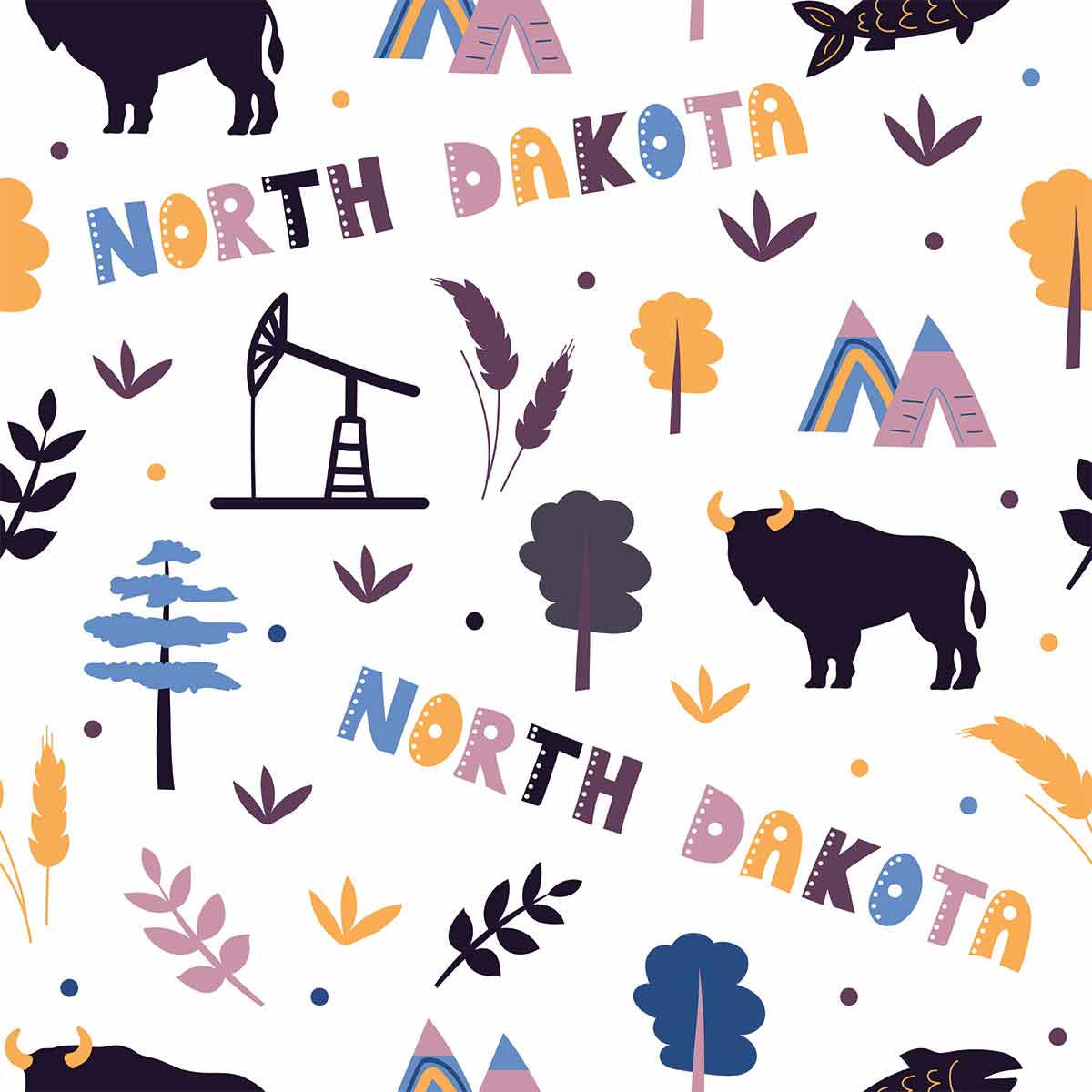
Knife River Indian Villages National Historic Site is in Stanton in Mercer County, North Dakota.
This national park site is one of North Dakota’s lesser-known national park service sites.
This site preserves the historical and cultural heritage of the Northern Plains Indians, including the Hidatsa people.
This national historic site is 1,758 acres (711 ha) and provides visitors with plenty of things to see and do.
The Knife River Indian Villages were at the centre of Hidatsa life and culture.
They were predominantly farming people living near the banks of the Missouri River in villages with earth lodges and semi-subterranean houses.
When visiting this national historic site, you can see the remains of two Hidatsa villages, Awatixa and Metaharta, occupied by the Northern Plains Indians between the 17th century and the late 1800s.
You can see the remains of the earth lodges as well as the gardens and fields that the people used.
There are also information boards to learn about the Hidatsa people’s daily life.
You can check out the visitor centre to learn more about the area through interpretive displays, exhibits and a great educational program.
There is also an impressive full-scale reconstructed earth lodge complete with garden and village sites.
The Knife River Indian Villages National Historic Site is at 564 County Road 37, Stanton, ND 58571.
National Historic Trail
4- Lewis & Clark National Historic Trail
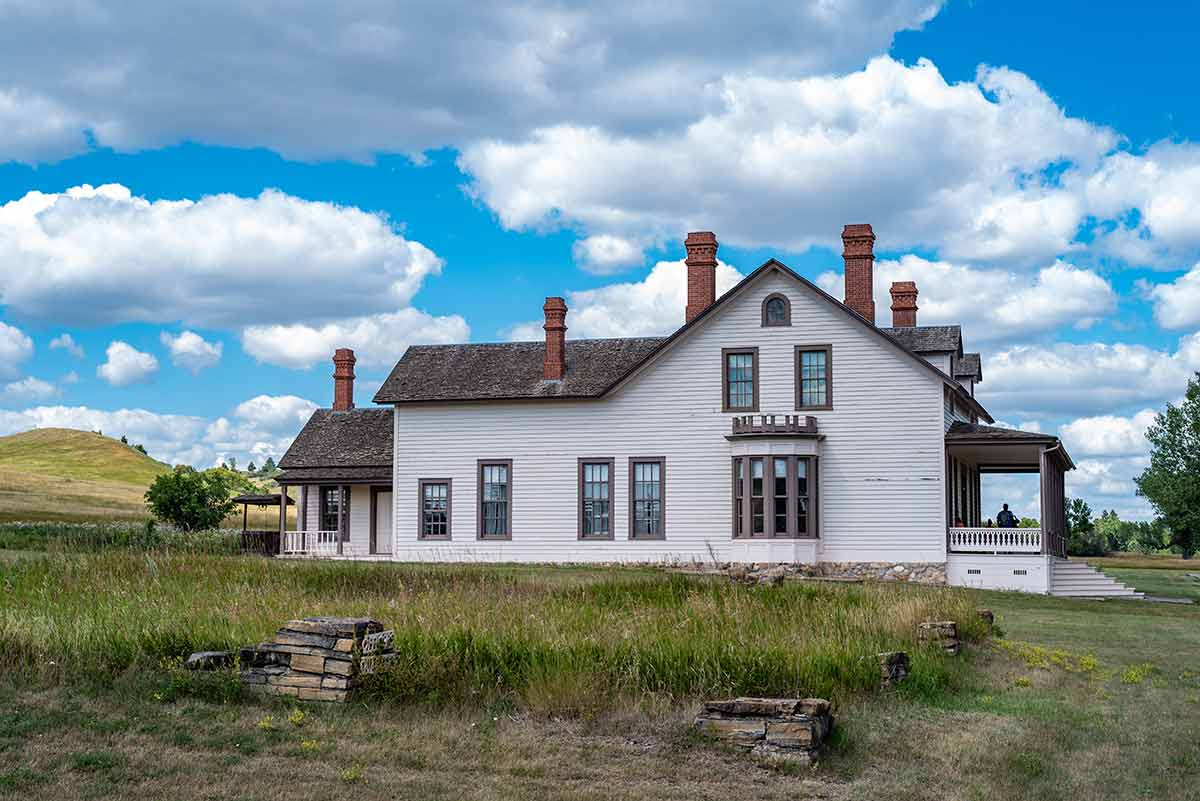
This national historic trail follows the Lewis & Clark Expedition route, otherwise known as the Corps of Discovery.
This expedition was carried out between 1804 and 1806 and was led by Captain Meriweather Lewis, his friend, and Lieutenant William Clark.
The Louisiana Purchase Treaty was signed with France on 30 April 1803.
This agreement saw the United States purchase 828,000 square miles of land west of the Mississippi River at 4 cents an acre, a total of $15 million dollars.
This was a significant purchase, allowing the U.S. to double its size and expand the nation west.
All this newly acquired land was completely unknown to the United States and needed investigation. That’s where Lewis and Clark came in.
Thomas Jefferson, the 3rd U.S. President, commissioned the Lewis & Clark Expedition to map out the newly acquired territory, find trade routes across the land, and make trade connections with Native Americans.
There was also a secondary aim of mapping and understanding the new lands’ geographical formations and the biodiversity in the area.
The Lewis & Clark National Historic Trail today passes through 16 states: Pennsylvania, Ohio, West Virginia, Montana, Kentucky, Nebraska, Indiana, Illinois, Missouri, Kansas, Iowa, South Dakota, North Dakota, Idaho, Washington and Oregon.
The trail covers an approximate distance of 4,900 miles (7885 km).
You can make many stops along the original Lewis & Clark Expedition route in North Dakota. Here are some of the top attractions:
- Sitting Bull Burial Site
- Fort Abraham Lincoln State Park
- North Dakota State Capitol
- On-A-Slant Indian Village
- North Dakota Heritage Centre & State Museum
- Double Ditch Indian Village State Historic Site
- Lewis & Clark Interpretive Center
- Missouri-Yellowstone Confluence Interpretive Center
- Fort Buford State Historic Site
- Garrison Dam
- Lewis & Clark Riverboat
- Fort Mandan State Historic Site
The Lewis & Clark Interpretive Center is at 2576 8th Street SW, Washburn, ND 58577.
National Scenic Trail
5- North Country National Scenic Trail
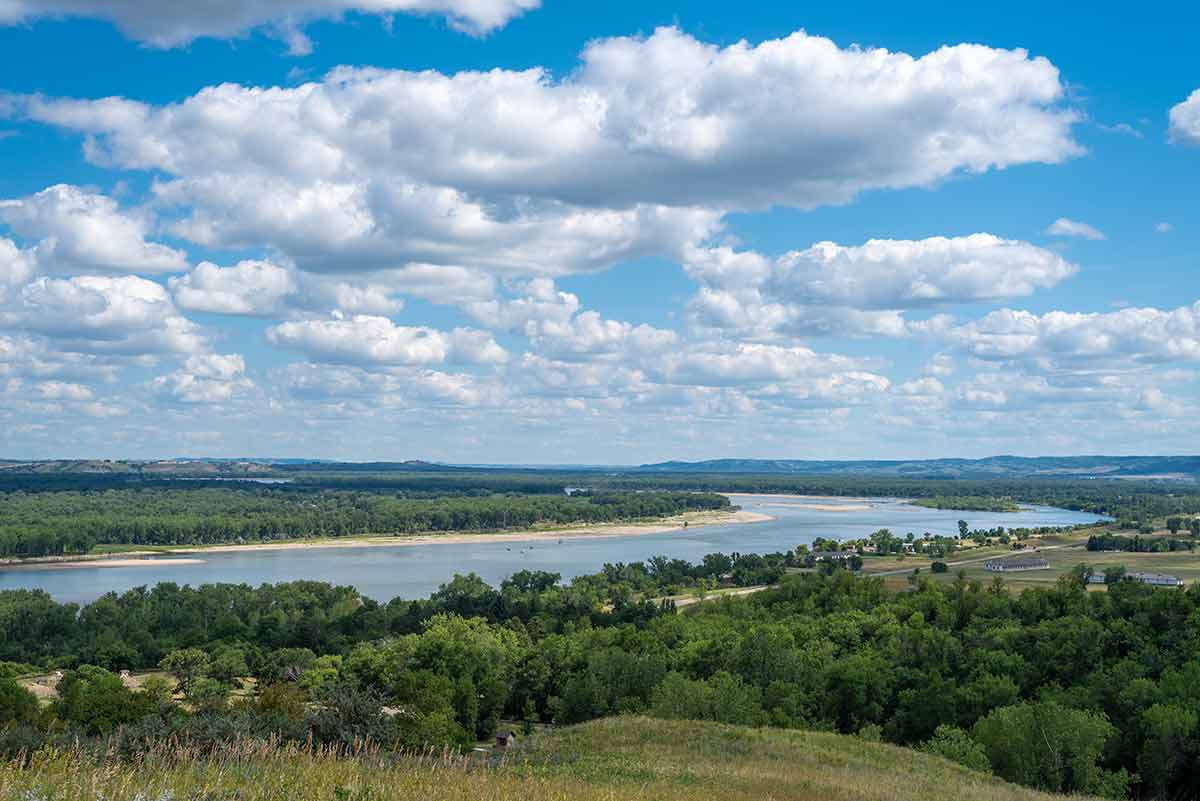
Another of North Dakota’s trails is the North Country National Scenic Trail, also known as the NCT.
This is one of 11 national scenic trails in the U.S., and it’s dedicated to showcasing America’s fascinating and beautiful backcountry.
The trail was first established by the National Trails System Act 1968 which aimed to create walking spaces for the public’s education and enjoyment.
The North Country Trail was designated as one of the United States’ National Scenic Trails in 1980.
The North Country National Scenic Trail is 4,600 miles long and stretches across seven states from New York to North Dakota.
The trail passes through New York, Pennsylvania, Ohio, Michigan, Wisconsin, Minnesota and finally, North Dakota. Michigan has the largest portion of the trail at around 1,200 miles.
In 2019 Vermont was added to the trail extending the trail by 70 miles (112 km).
The trail is open year-round, but depending on which sections you visit, you should check the local weather, as conditions in winter can become a little harsh.
North Dakota’s portion of the trail includes 440 miles of incredible hiking trails.
The states section of the NCT generally speaking follows North Dakota’s longest river, the Sheyenne River
If you are looking for long hikes, check out the North Country National Scenic Trail sections that fall within the Sheyenne National Grasslands and the Lonetree Wildlife Management Area.
There are also many longer hikes around Lake Ashtabula, the New Rockford Canal, and the McClusky Canal.
If you are looking for just quick day walks or even hikes that last just an hour or so you can head to some of these areas:
- Ekre Grassland Preserve
- Sheyenne State Forest
- Springs Recreation Area
- Fort Ransom State Park
- Audubon National Wildlife Refuge
- Lake Sakakawea State Park
You might be a bit overwhelmed when visiting North Dakota regarding which section of the trail to visit. Here’s a quick guide for each region that the trial passes through:
- West Central North Dakota – The trail passes from Lake Sakakawea State Park to the Lonetree Wildlife Management Area.
- Southeast North Dakota – The trail passes from Lake Ashtabula to the North Dakota-Minnesota state line.
- Central North Dakota – The trail passes from New Rockford Canal to the north part of Lake Ashtabula.
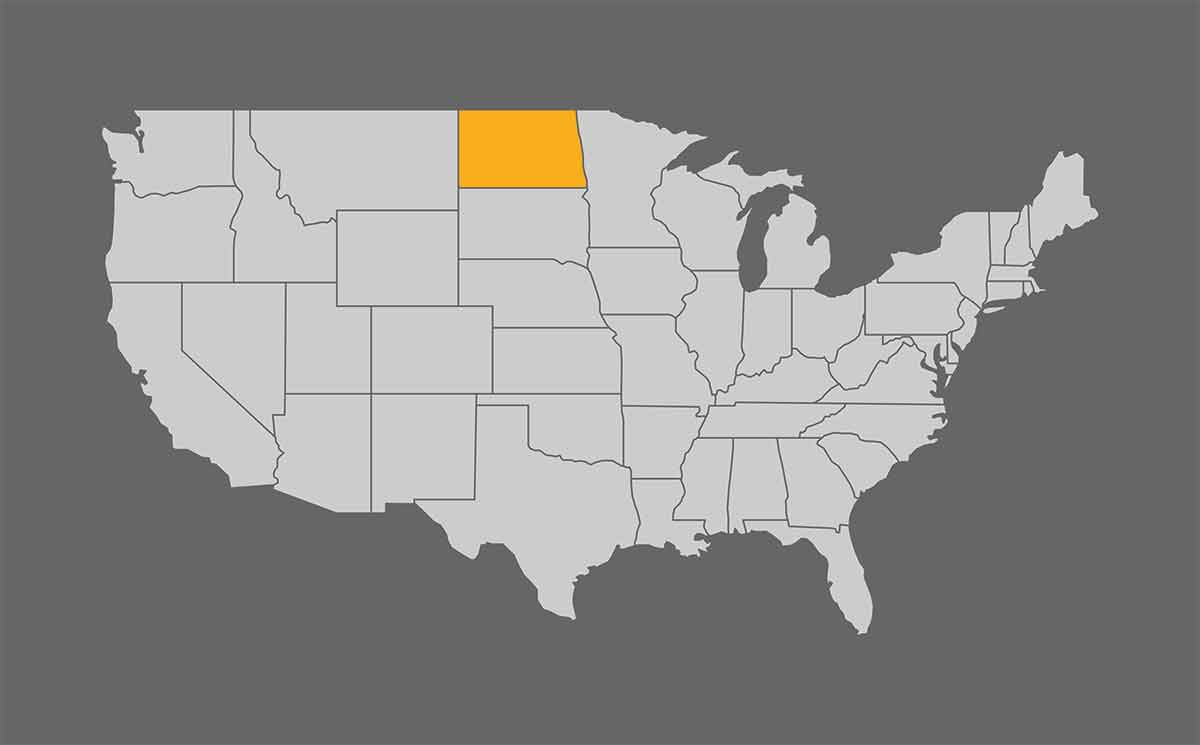
If you love exploring national parks, you might like to read:
- Wyoming National Parks Guide
- Nevada National Parks Guide
- Michigan National Parks Guide
- 5 Maine National Parks
- New Hampshire National Parks Guide
- 25 National Parks in Canada
- 17 National Parks in Argentina
- Tasmania National Parks
- 20 National Parks in Mexico
- 18 New Mexico National Parks
- 18 National Parks in Massachusetts
- 17 Colorado National Parks
- 4 Indiana National Parks
- 5 Nebraska National Parks
- 30 Virginia National Parks
- 9 New Jersey National Parks
- 8 National Parks in Arkansas
- 8 Alaska National Parks
- 13 Tennessee National Parks
- 6 National Parks in Louisiana
- 5 Illinois National Parks
- 7 National Parks in Oklahoma
- 7 National Parks in South Dakota
- 12 Alabama National Parks
- 5 North Dakota National Parks
- 8 National Parks in West Virginia
- 20 National Parks in Arizona
- 11 National Parks In Florida
- 8 Hawaii National Parks
- 6 National Parks In Idaho
- Texas National Parks Guide
- 9 California National Parks
- 11 National Parks In Georgia
- 7 National Parks In Missouri
- 5 National Parks in Minnesota
- 7 National Parks In Kentucky
- 8 National Parks In Montana
- 15 National Parks In Washington State
- 8 South Carolina National Parks
- 12 North Carolina National Parks
- 4 Wisconsin National Parks
- 20 National Parks In India
- 11 Oregon National Parks
- 5 Connecticut National Parks
- 27 National Parks In New York State
- 4 Iowa National Parks
- Yosemite National Park
- Zion National Park
- 21 National Parks in Pennsylvania
- 9 National Parks in Mississippi
- 5 National Parks in Rhode Island
- 9 National Parks in Taiwan
- 20 East Coast National Parks
- Guide To Winter in Yellowstone National Park
Plan Your Trip

Rent A Car – Find the best car rental rates at Discover Cars. They compare car hire companies to provide you with the best deal right now.

Find A Hotel – If you’re curious about this article and are looking for somewhere to stay, take a look at these amazing hotels.

